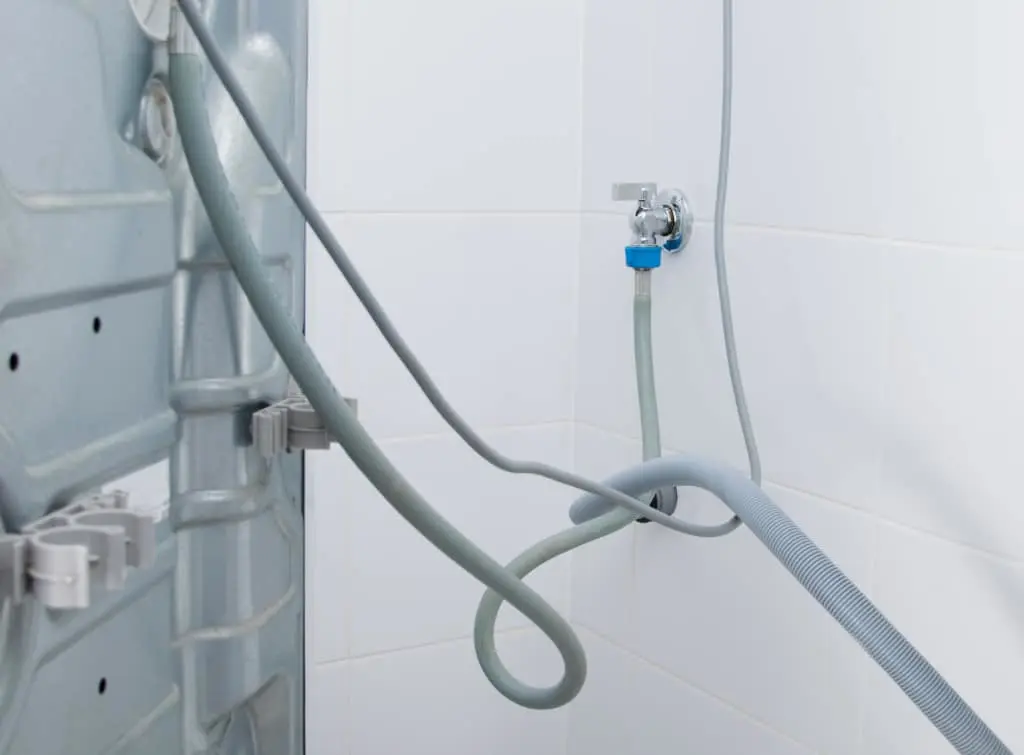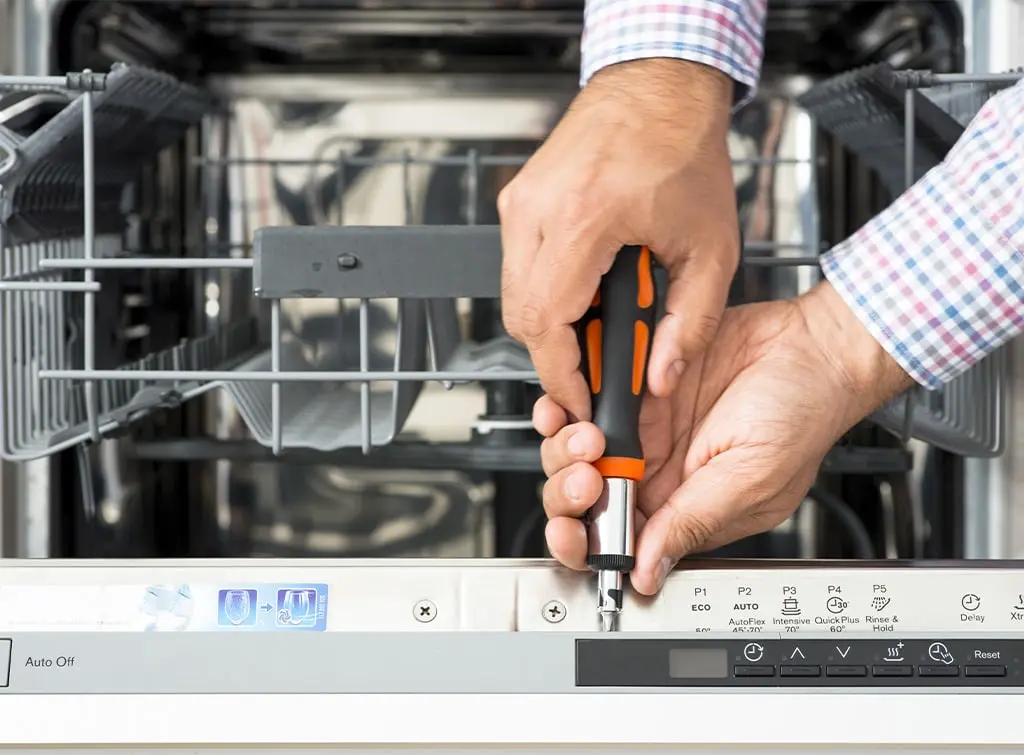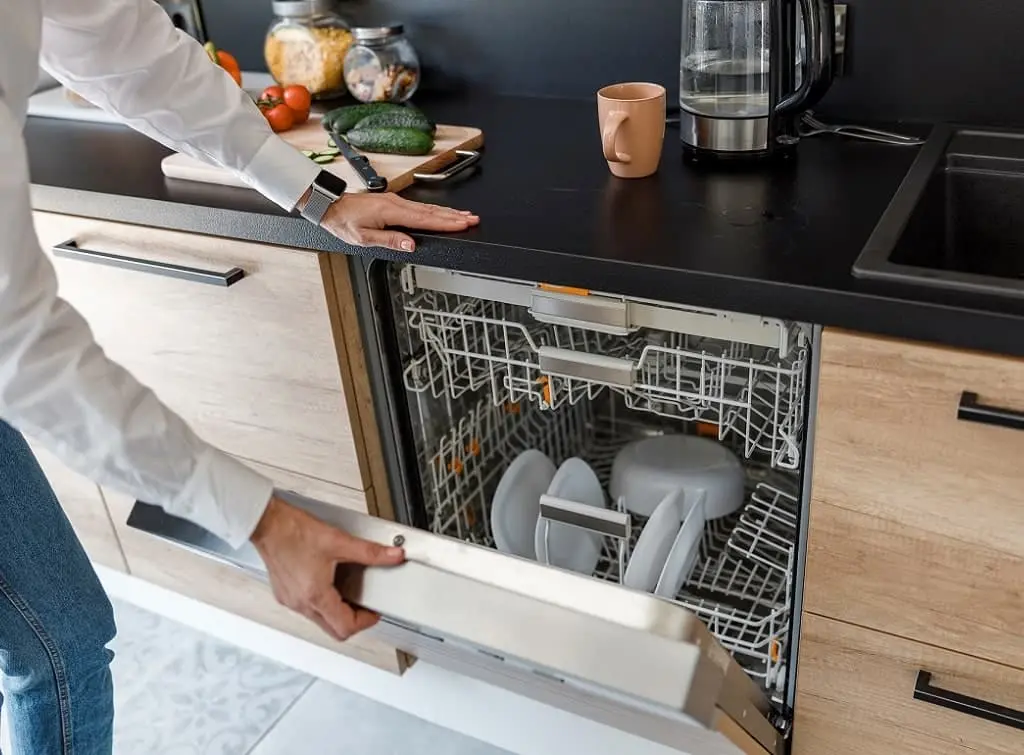Blog>Expert Advice>Do I need to install an integrated or freestanding dishwasher?
Last updated: 12 February 2025
Do I need to install an integrated or freestanding dishwasher?
Not sure whether your space is suitable for an integrated or freestanding dishwasher? Here's the lowdown.

Deciding between an integrated or freestanding dishwasher can be a tricky task. But it can be even trickier if you only have a set space available for it.
Here, we’ll take a look at space and installation requirements for both integrated and freestanding dishwashers so that you can understand which you need.
Plus, we’ll cover some of the pros and cons of each.
What are the dimensions of freestanding vs integrated dishwashers?
Both integrated and freestanding dishwashers tend to be around 60 cm wide (although there are also slimline models available, which are around 45 cm wide).
They also tend to be around 82 cm tall – meaning they should fit beneath a standard kitchen worktop easily.
However, freestanding dishwashers are usually deeper than integrated ones.
This is because they’re designed so that the top of the appliance sits in line with your worktops – whereas integrated dishwashers will need space for a cabinet door to be attached to the front.
While freestanding dishwashers are typically 59.8 cm deep, integrated dishwashers have a standard depth of 55 cm.
How do I know if a dishwasher will fit my space?
To check whether a dishwasher will fit your space, you’ll need to measure the space available.
This means measuring the:
Width
Height
Depth
BUT remember you won’t be able to push your dishwasher right up against the back wall.
Rather, you’ll need to allow at least 3 cm of extra space behind your dishwasher for the water supply and drain pipes.

Do I need to install an integrated or freestanding dishwasher?
Most of the time, you’ll be able to choose between an integrated or freestanding dishwasher.
After all, they both require a similar amount of space.
However, if you already have pipework running along the back then this can cause issues if you’re hoping to install an integrated dishwasher.
Essentially, if there’s pipework above 150 mm off the floor, then your dishwasher likely won’t sit back far enough. In this case, you’d be better off installing a freestanding dishwasher – or getting the pipework moved.
On the other hand, if there’s nothing in its way above 150mm off the floor, you can install an integrated or freestanding dishwasher without a problem. The choice is yours!

What do you need to install a dishwasher?
Both freestanding and integrated dishwashers will need to be…
Installed near a power connection
Installed near the water supply in your kitchen
Connected to your plumbing
If you already have the pipework and power connection in place, your dishwasher will simply need to be plumbed in under the sink (and the cabinet door attached if it’s integrated!).
On the other hand, if you don’t yet have these elements in place, you’ll also need:
An electrician to run a new feed for the dishwasher from another socket
A plumber to add the appropriate connection under the sink
See the tradespeople we've checked and recommend for your job
What does dishwasher installation involve?
Assuming you already have the pipework and power connection in place, dishwasher installation is typically relatively easy.
However, we always recommend getting a dishwasher technician or plumber to carry out the work for you.
This way, you can be confident that your new dishwasher will be installed correctly and that there won’t be any mishaps along the way!
The installation process will typically involve:
Unboxing your new appliance
Checking it for damage
Inspecting your electrical and plumbing connections to make sure they’re safe and suitable
Turning the water off at the mains
Connecting the dishwasher to the mains water supply (within 1.5 metres of the appliance) and electrical socket
Connecting the waste hose to a downpipe or extended waste connection
Testing the appliance for leaks and functionality
Turning the water and power back on
Removing your old dishwasher (if agreed upon beforehand)
Just bear in mind that installing an integrated dishwasher will typically take a little longer than installing a freestanding dishwasher.
This is because the door will need to be fitted to the front of your dishwasher and aligned with the rest of your cabinets.

How much does dishwasher installation cost?
Costs to install an integrated or freestanding dishwasher are similar.
As a rough guide, dishwasher installation costs tend to range between around £40 and £90.
If anything, you might find that freestanding dishwasher installation works out as slightly more cost-effective.
This is because your technician won't need to spend time fitting a door to the front of your dishwasher - or adjusting it to fit seamlessly with your other cabinets.
Similarly, repair costs can be a little lower for freestanding appliances, since they tend to be easier to access.
What’s better: an integrated or freestanding dishwasher?
Assuming your space can accommodate either a freestanding or integrated dishwasher, you might be wondering which you should choose.
Here are the main benefits of each.
Integrated dishwasher installation pros
Hidden from view
Slick and uniform look
Quieter
No gaps for crumbs and dirt to accumulate

Freestanding dishwasher installation pros
More affordable
Easy to install
Cheaper to repair
Can be taken with you if you move house
Can be matched to other freestanding appliances like fridge freezers and stoves
More choice available

As you can see, there’s no one right answer. Rather, it’s all about your priorities.
If you want your kitchen to look sleek and seamless with your appliances hidden from view, an integrated dishwasher could be your preference.
On the other hand, if budget is more of a concern, you might prefer a freestanding dishwasher. Not only are they typically more affordable, but you can also take them with you if you move house, saving you the cost of buying a new dishwasher every time!
Find a technician for dishwasher installation near me
Whether you decide that an integrated or freestanding dishwasher is more suitable for your needs, a plumber or dishwasher technician can make sure it’s installed properly.
Not only will this save you time, but it will also reduce the risk of leaks and water damage, giving you peace of mind.
Luckily, you’re in the right place!
At Checkatrade, all our tradespeople have to pass up to 12 checks and regularly receive reviews from homeowners on everything from punctuality to professionalism.
In fact, we’re so confident in the quality of the trades on Checkatrade that if you book through us, we guarantee their work up to £1,000 (guaranteed for 12 months – Eligibility and T&Cs apply).
See the tradespeople we've checked and recommend for your job

We check the reviews on Checkatrade are from real people, and that trades meet our high standards.
FAQs
Can I replace my integrated dishwasher with freestanding?
Yes, you can replace your integrated dishwasher with a freestanding one. However, you will need to remove or adjust the kitchen plinth.
What are the disadvantages of integrated dishwasher?
The main disadvantaged of an integrated dishwasher compared to a freestanding model include:
More expensive
Takes slightly longer to install
Slightly higher repair costs
Can't be taken with you if you move house
Less choice available
Do freestanding dishwashers need to be plumbed in?
Yes, freestanding dishwashers will need to have a drainage point and water connection - just like integrated dishwashers.
How much space does a freestanding dishwasher need?
Standard freestanding dishwashers are:
60 cm wide
82 cm tall
59.8 cm deep
You should also leave 3 cm of extra space at the back of your dishwasher to accommodate pipework.
Can I install a freestanding dishwasher myself?
If you have a drainage point, water connection and power connection already in place, you can install a freestanding dishwasher yourself as it's just a case of connecting it.
However, we would still recommend getting a professional to install your dishwasher for you wherever possible. This is because installing your dishwasher incorrectly can increase the risk of leaks and water damage, leading to expensive repairs.
On the other hand, a plumber or dishwasher technician will have the experience and knowledge needed to install your dishwasher correctly first time around, giving you peace of mind.
See the tradespeople we've checked and recommend for your job
Contact or pay a trade through Checkatrade and you’re covered by our 12-month guarantee of up to £1,000*

See the tradespeople we've checked and recommend for your job


